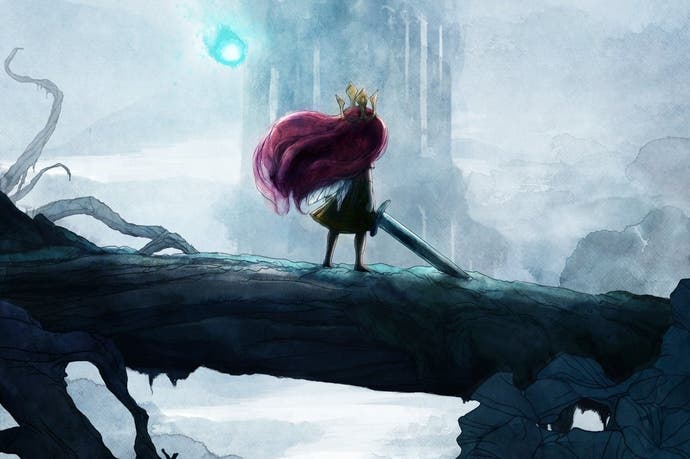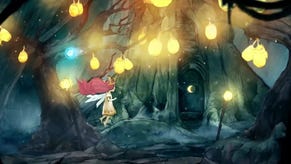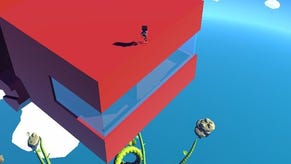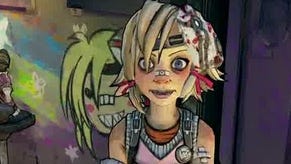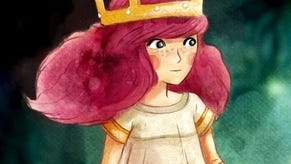Child of Light review
Iridescent.
What happens when the creative minds behind some of Ubisoft's biggest blockbusters are given free rein to try something new? Why, they opt to create an adventure-platformer with Japanese role-playing game tendencies, of course - and a very pretty one at that.
Whether crossing its 2D environments to uncover hidden paths and treasures or trading blows in its turn-based battles, Ubisoft Montreal's Child of Light is full of details and incidental background effects ready to catch the eye. The UbiArt Framework engine - which powers the recent Rayman games - has been used to unique effect, creating a gorgeous, painterly art style that benefits from a compelling use of light and shade. The sense of scale offered by wide shots of our young protagonist Aurora set against vast backdrops creates vistas that would comfortably grace any wall.
Evidently, a great deal of time and effort has been poured into Child of Light's visual fidelity, so it's a pleasure to discover that almost every other area of the game has received the same attention. It's as uplifting to play as it is to behold.
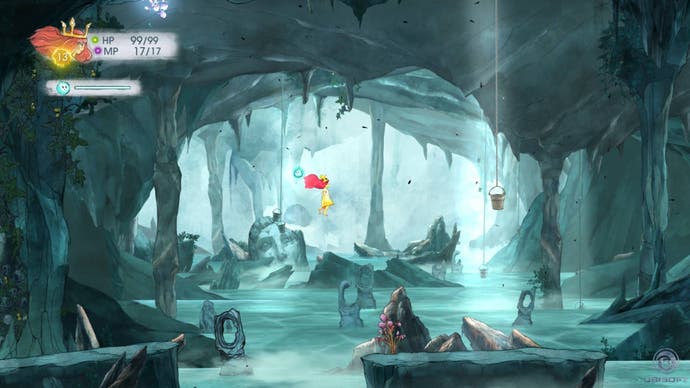
For starters, it sounds as well as looks lovely; from the light slap of Aurora's bare feet on stone slabs to the gentle flutter of her wings in flight, Ubisoft's audio team shows a nuanced touch. The real star, however, is Canadian singer-songwriter Cœur de pirate (Béatrice Martin) whose soundtrack possesses a fairytale lilt throughout. A quiet tinkling of ivories while exploring a waterlogged cavern contrasts with the tumbling cadence of a symphony orchestra during the urgent battle themes; Martin's composition perfectly complements Child of Light's aesthetics and pacing at every turn.
That feeling of coherence pervades the game. Exploration is interspersed with platforming and, thanks to Aurora's ability to fly, levels have the scope for both vertical and horizontal traversal. Elsewhere, light puzzle-solving fits hand-in-hand with clearing obstacles and avoiding hazards. The broadly open-ended mission structure allows you to tackle story and side missions at your leisure, while a fast-travel system makes it easy to return to previously explored areas to dig out the dozens of pick-ups from the deepest, darkest corners of each of the four main areas.
It makes for a relaxed adventure that can be enjoyed in co-op play, too. Like Rayman Legends before it, Child of Light features a support character in the form of sentient firefly, Igniculus, who is controlled either by a second player or on the right stick in single-player. Igniculus' main role during exploration is to illuminate dark areas, retrieve hard-to-reach pick-ups and trigger light-sensitive switches to open doors or temporarily deactivate environmental hazards. These hands-on tasks, combined with Igniculus' ability to pass through scenery, ensure that a second player is kept busy moving unhindered around the environment alongside Aurora, rather than sitting idle waiting for something to do. Igniculus can also be used to collect Wishes - bright globules released from glowing flora that restore health and magic points between battles.

While only Aurora and Igniculus are ever visible when traversing the world, Child of Light features half a dozen characters who will drift in and out of your party depending on the storyline, your decisions and your participation in the game's side quests. Each character has a story to tell and, usually, a request that further bolsters your mission objectives, and all are varied enough to warrant a place at your side. More crucially, each party member proves useful during Child of Light's excellent combat system.
Barring a handful of boss battles, adversaries are visible while traversing the world and can be engaged or avoided as desired, while approaching an enemy from behind - or using Igniculus to dazzle them first - will result in a surprise strike and grant you the initiative. Battles are typically two-versus-three, with the ability to swap out any of your characters for another in your party, and the entire system is predicated around a time bar and transparent turn order. Character icons all move along the same bar at the bottom of the screen and upon reaching the start of the red "Cast" section of the bar, the action pauses for you to select an action: attack, defend or use an ability or spell.
Each of these actions takes a set time to perform, which then dictates how quickly your character icon moves through the rest of the cast section of the bar; once the icon reaches the end the action will be taken. However, actions can be interrupted, so a swift, low-damage, basic attack has a chance to interrupt the casting of a powerful but slow-charging spell. Defence and healing actions are the swiftest of all, thus ensuring that even if you're on the back foot you can hope to weather the storm as you attempt to figure out an effective counter-strategy.
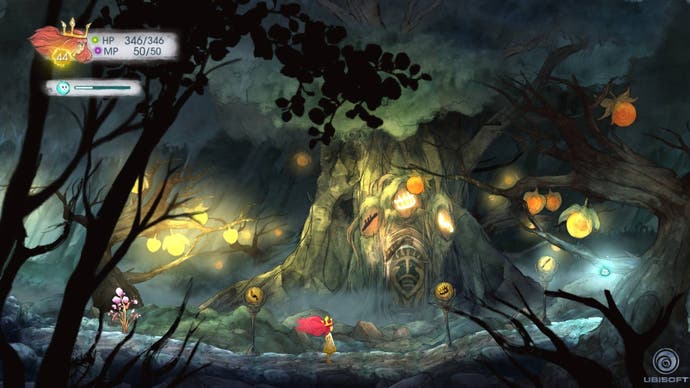
While there's a familiar rock-paper-scissors mix of elemental powers, there's also real nuance and strategy to be found in balancing the timing of attacks and the use of status buffs and debuffs to effectively manage any battle and maintain the upper hand. Furthermore, by hovering over them and activating a meter-restricted ability, Igniculus can slow a single enemy's progress along the time bar or provide light healing to allies, thus adding an additional strategic consideration and another meaningful action for a potential second player.
As more skills and characters are unlocked, additional options become available and so things really come into their own in the final third of the game. Here, you have to balance powerful Target-All attacks with enemies that can auto-counter, along with swapping in party members that each have particular strengths to deal with specific threats. While this makes things all the more interesting, it also serves to highlight how easy it is to coast through the first half of the game without paying too much mind to how you're progressing your characters along their respective upgrade trees, or whom you're arming with the status-altering Oculi stones.
This is by far Child of Light's biggest drawback, as the lack of meaningful challenge on normal difficulty extends far beyond the expected early stages and into the second half of the game. In order to keep things moving at fair clip, there are very few tutorials for either the combat mechanics or the deceptively deep elemental crafting system. However, to balance the different pace at which players might explore these systems and the extent to which they'll utilise them without prompting, Ubisoft Montreal has limited the necessity to fully grasp their deeper potential until much later in the game.
A welcome reminder that the industry's major players still have the creative flair to push beyond the lucrative safe ground
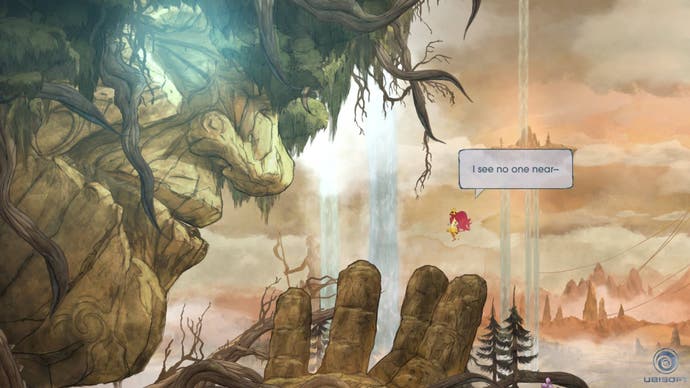
In addition, the developer has opted for a combination of a very generous XP system and bloated skill-trees that ensure that the various party members level up every two or three battles. As such, you're spending the resultant influx of skill points on superfluous minor stat boosts in between more meaningful upgrades. On a positive note, New Game Plus offers the chance to up the difficulty, or you can choose to increase the pace of the battles at any time, which provides a slightly stiffer challenge.
It feels almost churlish to criticise Child of Light for something as subjective as the pitch of its difficulty. However, when you're able to stockpile dozens of potions and are levelling up so often that it starts to become a minor irritation to keep dipping into the menus to spend upgrade points, then it's a problem. My advice for those with reasonable JRPG experience is to start the game on hard difficulty and get stuck into the battle and crafting systems right from the off.
Child of Light's story is one of faltering steps taken on a path of personal growth. This aptly mirrors Ubisoft's own trials and tribulations of the past few years, and the developer-publisher's effort to wholeheartedly embrace downloadable games - not just as a form of content delivery but as means of experimental expression. While Far Cry 3's writer, Jeffrey Yohalem, imbues the narration and dialogue with a sing-song quality that suits the fairytale theme, there's little that is childish about Child of Light. JRPG purists may bemoan the relative lack of complexity and it would most certainly benefit from a more challenging difficulty curve to invite earlier experimentation with its rewarding mechanics, but the tone and pacing is otherwise well judged.
Child of Light stands as a wonderfully realised venture into unfamiliar territory for Ubisoft - and a welcome reminder that the industry's major players still have the creative flair to push beyond the lucrative safe ground that they so often favour to create well-crafted, highly-polished gems such as this.
